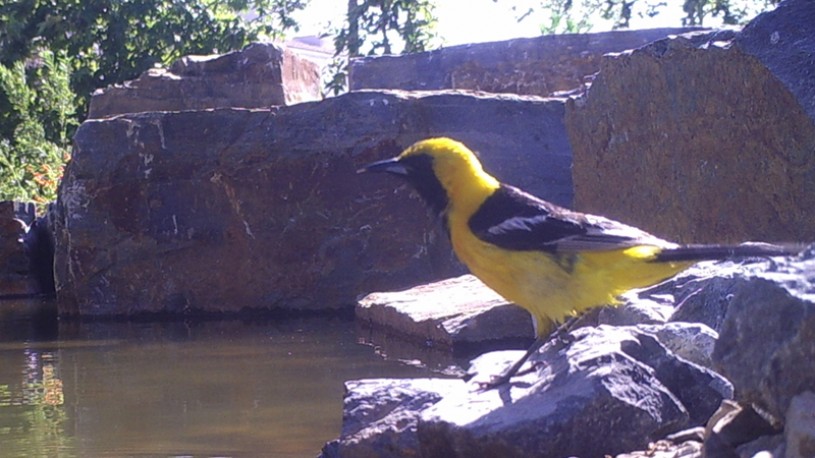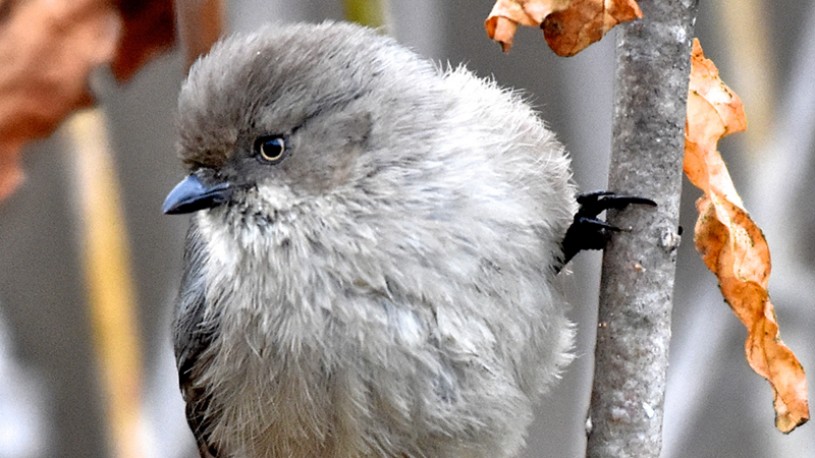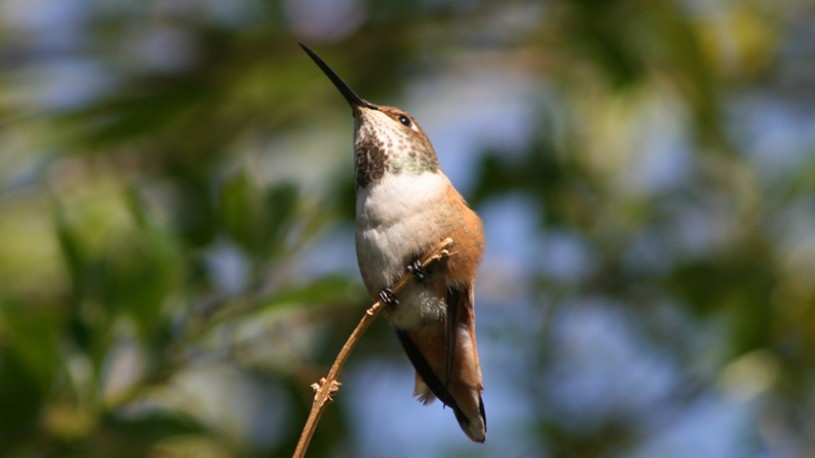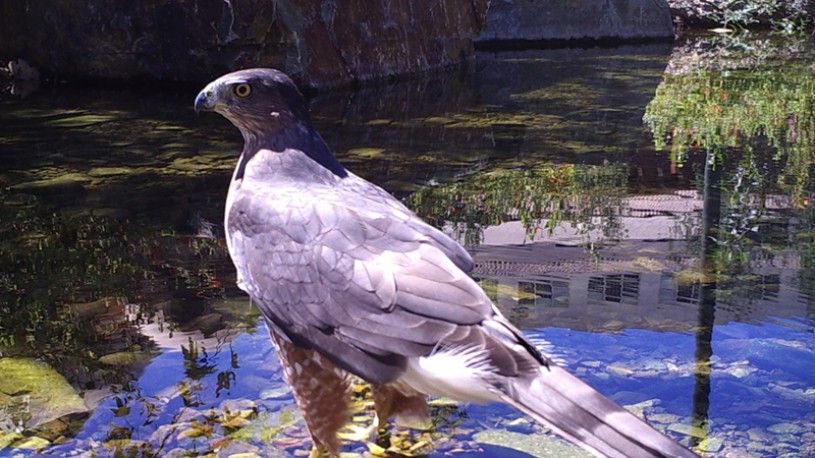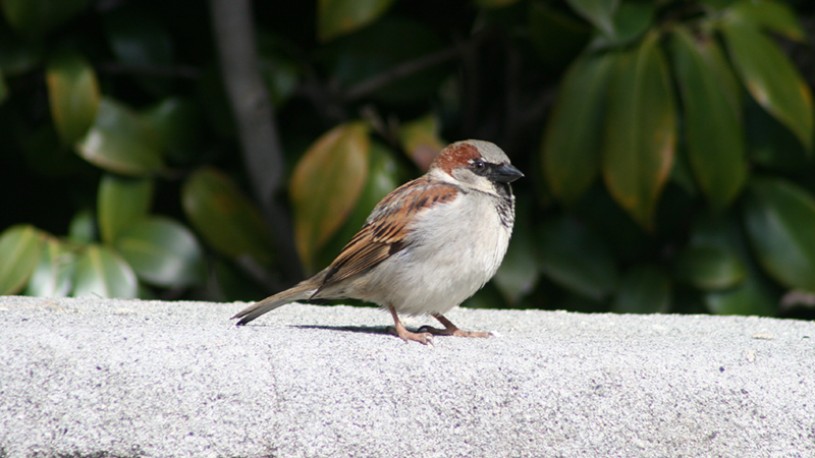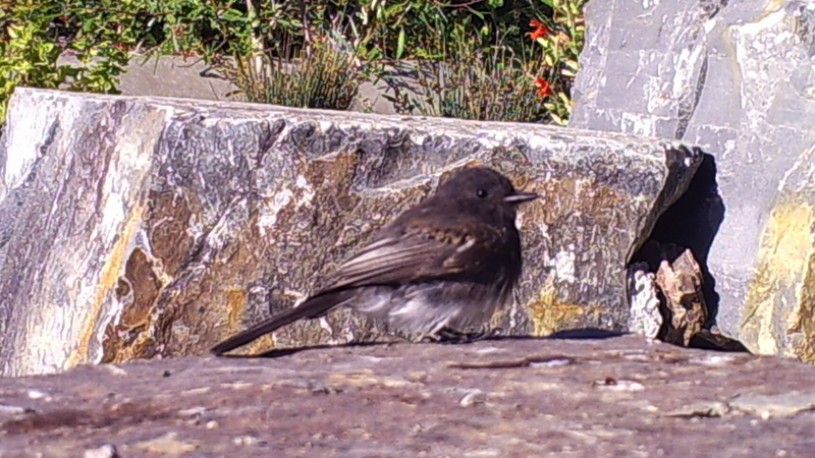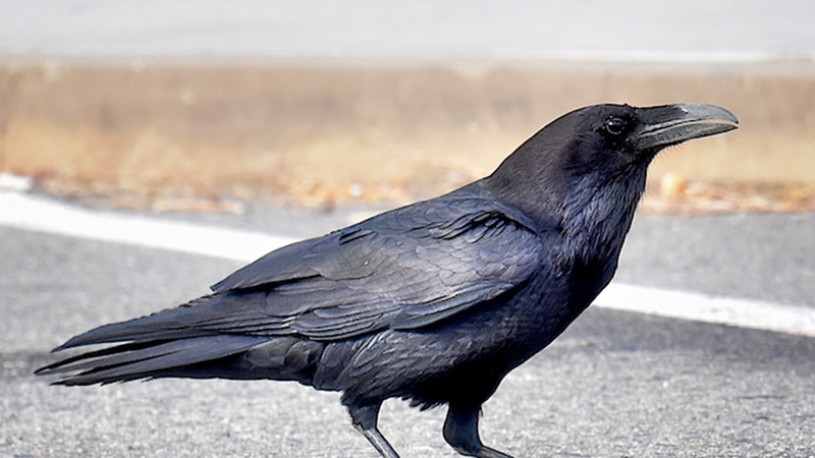NHMLAC Birding Guide
A brief guide to backyard birds around Los Angeles in the spring.

Welcome to your NHMLAC Birding Guide!
The following guide will help you identify the common species of birds that you are likely to encounter while observing wildlife in the L.A. area.
- Discover Wildlife
Help us investigate the incredible nature all around L.A.— in backyards, schools, and in neighborhoods, and discover the wildlife all around you. - Record What You See
Snap a photo of the animals, plants, and fungi you find, and when and where you found them. The more detailed the observation, the better! - Share What You Find
Submit your observations to iNaturalist, available on the App store for OS or Android.
For help using iNaturalist:
Consult the tutorial in the iNaturalist app
Visit the Help section at iNaturalist.org
E-mail us at nature@nhm.org or call us at 213.763.3272
Hooded Oriole
Icterus cucullatus
There is hardly a better sign of the return of spring in the Los Angeles area than the arrival in March of these colorful visitors.
Appearance
Adult males are boldly colored in deep yellow and black (see image above), females are more uniformly greenish-yellow; one-year-old males resemble females but have a black throat.
Habitat
Their woven nest is almost always built in palm trees, suspended from the underside of a frond.
Notes
These orioles feed mainly on nectar and insects, and will often visit sugar-water feeders.
Bushtit
Psaltriparus minimus
Our smallest songbirds, Bushtits travel in twittering flocks, moving among trees and shrubs gleaning stems and leaves for small insects.
Appearance
If you can get a close look, you can tell the white-eyed females from the dark-eyed males.
Habitat
The Bushtit nest is distinctive—a 10-inch-long hanging pouch made of soft fibers, down and spider webs, with a small entrance near the top. Bushtits are common year-round residents in urban Los Angeles.
Notes
Bushtits are the only New World representatives of a small family otherwise found only from Europe to Southeast Asia.
Allenʼs Hummingbird
Selasphorus sasin
This rufous and green jewel is now the most common hummingbird in most gardens around Los Angeles, though a few decades back it was restricted to the Channel Islands and Palos Verdes Peninsula.
Notes
Our abundant exotic plantings have allowed it to spread and, along with the slightly larger Anna’s Hummingbird, it is a familiar sight year round. Watch carefully for other hummingbird species that may pass through in spring: Rufous, Black-chinned, and Costa’s.
Cooperʼs Hawk
Accipiter cooperii
While many birds of prey have declined with expanding urbanization, the Cooper’s Hawk is an increasingly common sight around Los Angeles.
Appearance
Like most raptors, the females are larger and heavier than the males.
Notes
These are bird-hunting hawks, often making the rounds around our feeders or other places where sparrows, finches, doves, and other birds might congregate.
House Finch
Haemorhous mexicanus
One of the most familiar urban birds of Los Angeles, the House Finch is common and confiding, often nesting in porches and backyard trees and structures.
Appearance
The feather color of males may vary from deep red to orange or even yellow (the color comes from carotenoid, organic pigments, found in their food). The streaky brown females lack these colors.
Notes
House Finches are susceptible to mycoplasma infections, often appearing as swollen or weepy eyes; dirty feeders aid the spread of this disease, so it is always important to keep seed feeders and birdbaths clean. The Cornell Laboratory of Ornithology has used citizen scientists to track the occurence of mycoplasma infections in House Finches in North America and NHM Ornithology Curator, Allison Shultz, has conducted years of research on the populations’ genetic response to exposure to this disease.
Western Tanager
Piranga ludoviciana
Many migratory birds pass through the Los Angeles area from March through May on their way to more northerly breeding grounds. Various warblers, flycatchers, vireos, buntings and other songbirds can sometimes be seen in good numbers in our gardens and parks.
Appearance
One of the most striking songbirds moving through the Los Angeles area is the Western Tanager—the yellow, red and black male is unmistakable.
Habitat
These birds breed commonly from southeast Alaska through the mountains of western Canada and the U.S., including our local mountains.
Notes
Despite their name, these tanagers and their close relatives are in the cardinal (Cardinalidae) family rather than the true tanagers of the family Thraupidae that are nearly restricted to the Neotropics.
House Sparrow
Passer domesticus
This is the quintessential urban sparrow, scrappily grabbing bits of fallen food at outdoor eateries and sometimes even living full time inside some of our large warehouse stores.
Habitat
Introduced into North America in the late 1800s, these human commensals were common in California by 1900.
Notes
Despite their adaptability in our urban areas, House Sparrows have been shown to be declining in many areas, particularly in their native European range, perhaps, in part, to the increased industrialization of agriculture.
Black Phoebe
Sayornis nigricans
Urban Los Angeles provides the resources that this familiar insect-eater needs: abundant insect prey on or near the ground, mud (because of our irrigation) that is used in nest-building, and shelter (eaves, building ledges, bridges, culverts) that provide an overhang for the nest. As a result, few urban neighborhoods lack this species.
Appearance
The Black Phoebe is easily told by its blackish plumage (contrasting with a white belly), peaked head shape, and habit of constantly dipping its tail when perched.
American Crow
Corvus brachyrhynchos
Common Raven
Corvus corax
Crows are quintessential generalists, able to adapt to changing environments and exploiting a broad range of foods. Common Ravens have also increased around urban L.A., taking advantage of building ledges, power poles, and other structures for nest sites.
Appearance
Ravens are best told from crows by their larger size, heavier bills, wedge-shaped (rather than squared) tails, longer wings, and deeper voice. Unlike crows, ravens spend time soaring in the air.
Habitat
Despite a dip in crow numbers after the peak of the West Nile Virus outbreaks several years ago, crow numbers are generally far higher in urban southern California than they were decades ago. The abundant trees we have planted provide nesting and roosting sites, and fruit trees, outdoor pet food, garbage, small vertebrate prey and many other offerings keep them well fed.
